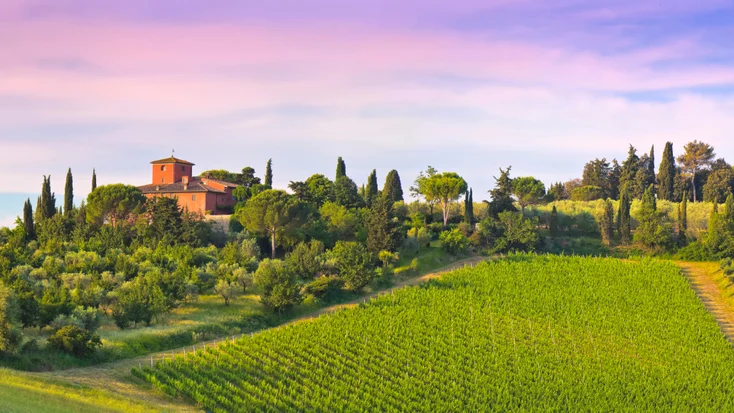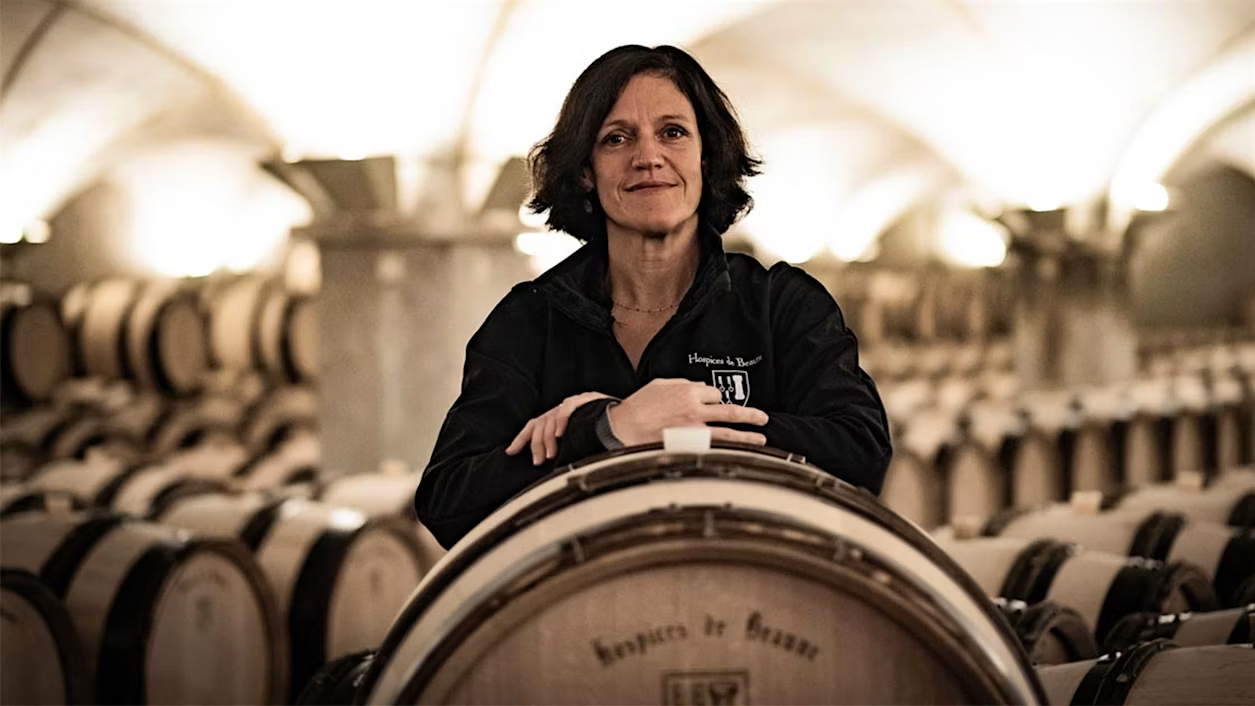The northern regions of Italy, particularly Piedmont and Veneto, are celebrated for their distinctive wines, which reflect the unique terroir shaped by geographical and climatic factors. The rolling hills of these areas, often shrouded in mist, create an environment that is conducive to grape growing, allowing for the cultivation of various notable grape varieties that thrive in cooler temperatures.
Piedmont is known for producing some of the finest wines in Italy, most notably Barolo and Barbaresco, both made predominantly from the Nebbiolo grape. This variety exhibits exceptional characteristics, where the cooler climate contributes to the development of high acidity and robust tannins, resulting in wines with depth and complexity. The Langhe region within Piedmont, with its clay and limestone soils, plays a crucial role in influencing the flavor profiles of Nebbiolo-based wines. These wines are often characterized by their aromas of roses, tar, and dark fruits, showcasing the intricate relationship between the land and the vine.
In the Veneto region, the landscape is marked by its unique terroir, which includes vineyards lying along the shores of Lake Garda and the Adige River. This region is particularly renowned for Prosecco, a sparkling wine made primarily from the Glera grape. The cooler climate, combined with the influence of the lake, helps to maintain the acidity levels in the grapes, resulting in a refreshing and effervescent style that is globally adored. Additionally, the traditional wine production methods, such as the Charmat method used for sparkling wines, further highlight how regional practices impact the final product.
In summary, the northern regions of Italy, with their unique climatic and geographical attributes, not only produce a variety of exquisite wines but also embody the deep connection between the land and the grape varieties cultivated. Understanding these aspects allows wine enthusiasts to appreciate the rich diversity inherent in Italian wines, setting the stage for a broader exploration of the country’s vinous landscape.
The Heart of Italy: Tuscany, Umbria, and Marche
Tuscany, Umbria, and Marche form a picturesque trio in central Italy renowned for their exceptional wine production. The sun-drenched hills of Tuscany are perhaps the most celebrated, with Chianti and Sangiovese being synonymous with this captivating region. The rich history of winemaking in Tuscany dates back to the Etruscans and Romans, who recognized the potential of the region’s diverse terroir. This ancient heritage continues to influence contemporary practices, where tradition blends seamlessly with innovation.
The significance of local traditions in wine production cannot be overstated. Many wineries operate according to time-honored methods, fostering a connection between the land and its people. The cultivation of grape varieties, particularly Sangiovese, is deeply rooted in the culture of Tuscany. This grape, celebrated for its versatility, flourishes in the region’s varied climate and soil types, resulting in wines with remarkable depth and character. Moreover, enhancements in vinification techniques have contributed to an array of expressions, allowing winemakers to showcase the potential of Sangiovese and other varietals such as Trebbiano and Canaiolo.
Umbria and Marche, neighboring regions, also showcase their unique wine offerings. While less renowned globally, Umbria presents delightful varietals such as Grechetto and Sagrantino, both of which embody the region’s agricultural richness. The Sagrantino grape, in particular, has gained accolades for its boldness and complexity. Similarly, the verdant hills of Marche produce Verdicchio, a white wine celebrated for its fresh acidity and minerality, often paired with the region’s local cuisine.
This intricate tapestry of history, tradition, and terroir reveals much about the wines from Tuscany, Umbria, and Marche. Each bottle tells a story imprinted by the sunlit hills, highlighting the importance of the land that nurtures these esteemed grapes. The diverse wines from these regions are not merely beverages; they are reflections of an ancient culture that continues to thrive, making them an integral part of Italy’s celebrated wine narrative.
Southern Italy: A Taste of Puglia, Calabria, and Basilicata
Southern Italy is a region renowned for its rich history and culture, which is equally reflected in its diverse wine offerings. Puglia, Calabria, and Basilicata stand out as key areas contributing to the unique tapestry of southern Italian wines. The warm Mediterranean climate in these regions provides an ideal backdrop for viticulture, allowing grape varieties to thrive and develop distinctive characteristics.
Puglia, often referred to as the “heel of Italy,” boasts an array of indigenous grape varietals, with Primitivo being one of the most notable. Primitivo wines, typically high in alcohol and rich in flavor, present deep berry notes complemented by subtle spice. These wines have gained recognition not only for their robust flavor profiles but also for their food pairings, making them a favorite in both local and international markets. Alongside Primitivo, the region has made significant strides in showcasing other varieties like Negromaro and Verdeca, further enhancing its wine portfolio.
Calabria, located just north of Sicily, is another vital contributor to southern Italy’s wine diversity. The Aglianico grape is particularly prominent here, known for producing complex and tannic red wines that age beautifully. The region’s hilly terrain and varied microclimates foster the growth of this noble variety, allowing winemakers to produce wines with great depth and elegance. Moreover, Calabria is home to unique wines derived from indigenous varietals such as Greco and Gaglioppo, which reflect the region’s terroir and traditional winemaking practices.
Basilicata, often overshadowed by its more famous neighbors, is gaining recognition for its winemaking renaissance. The Aglianico del Vulture is a flagship wine from this region, characterized by its intense aromatic bouquet and velvety texture. Recent trends in sustainable viticulture and modern winemaking techniques have spurred a new generation of winemakers, focusing their efforts on elevating quality and preserving local heritage. Southern Italy’s wine scene is thus marked by a fusion of tradition and innovation, celebrating its regional diversity while paving the way for a promising future.
Italian Islands: The Wine Cultures of Sicily and Sardinia
Sicily and Sardinia, two prominent islands of Italy, boast unique and vibrant wine cultures shaped by their distinct geography and history. The Mediterranean climate prevalent in these regions plays a vital role in the cultivation of various grape varieties, contributing to the overall character of the wines produced. The warm, sun-soaked days allow for optimal ripening, while the cool nights help to retain acidity, a crucial element for producing balanced wines.
In Sicily, the illustrious indigenous grape Nero d’Avola serves as a defining element of its wine identity. Known for its deep color and robust flavors, this varietal yields wines that exhibit rich notes of dark fruits, spices, and hints of chocolate. The island’s fertile soils, particularly in the south near the town of Avola, coupled with an innovative approach to viticulture, have rekindled interest in this grape. Additionally, Sicily’s white wines, such as Grillo and Catarratto, have gained recognition for their refreshing qualities and suitability for pairing with the island’s diverse cuisine.
On the other hand, Sardinia offers a compelling variety in its winemaking practices, prominently featuring Vermentino, a versatile white grape well-adapted to the island’s coastal regions. Vermentino wines from Sardinia are celebrated for their aromatic profiles and crisp acidity, often showcasing characteristics of citrus and herbs with a mineral undertone derived from the island’s unique terroir. Notably, the Cannonau grape, believed to be the ancestor of Grenache, also plays a significant role in Sardinian wine culture, producing bold reds marked by rich berry flavors and a certain earthiness.
Historically, both islands faced challenges affecting their wine production, including phylloxera in the late 19th century, which devastated vineyards. However, modern advancements in enology and a renewed appreciation for local varietals have paved the way for a renaissance of island wines. Enthusiasts and connoisseurs are increasingly drawn to Sicily and Sardinia, encouraging sustainable practices and innovative techniques that honor tradition while pushing the boundaries of flavor and quality. This revival enhances the long-standing legacy of these islands, ensuring their wines remain an integral part of Italy’s diverse viticultural tapestry.











Really, isnt the true beauty of Italian wine the geographical variety? Never a dull sip, from Tuscany to Sardinia. Just fantastic.
Isnt it fascinating how Italian wine varies so much from region to region? Each bottle tells a story of its unique terroir!
Absolutely! Its like Italy bottled its diverse landscapes into a wine collection.
Interesting read! But why are we neglecting the lesser-known but equally delicious wines from the Liguria region? They deserve some spotlight too!
Absolutely agreed! Ligurias hidden gems are criminally underrated. Lets start a wine revolution!
Interesting read! Anyone else think its crucial to explore more lesser-known regions like Molise or Abruzzo in Italian wine narratives?
Absolutely! Unveiling lesser-known regions like Molise and Abruzzo can enrich the narrative of Italian wines!
Is it just me or does the diversity of Italian wine make you want to book a one-way ticket to Italy? 🍷✈️
Ever consider the influence of climate change on the diverse Italian wine regions? How might this impact our beloved varieties?
Climate change or not, Italian wine will always be a touch of heaven on earth!
Isnt it fascinating how each Italian regions unique terroir shapes the character of its wines? Makes every sip a journey!
Absolutely! Its like teleportation via the taste buds, each region offering a new adventure.
Interesting read! But, dont you think the underrated Molise region deserves some recognition in Italian wine diversity too?